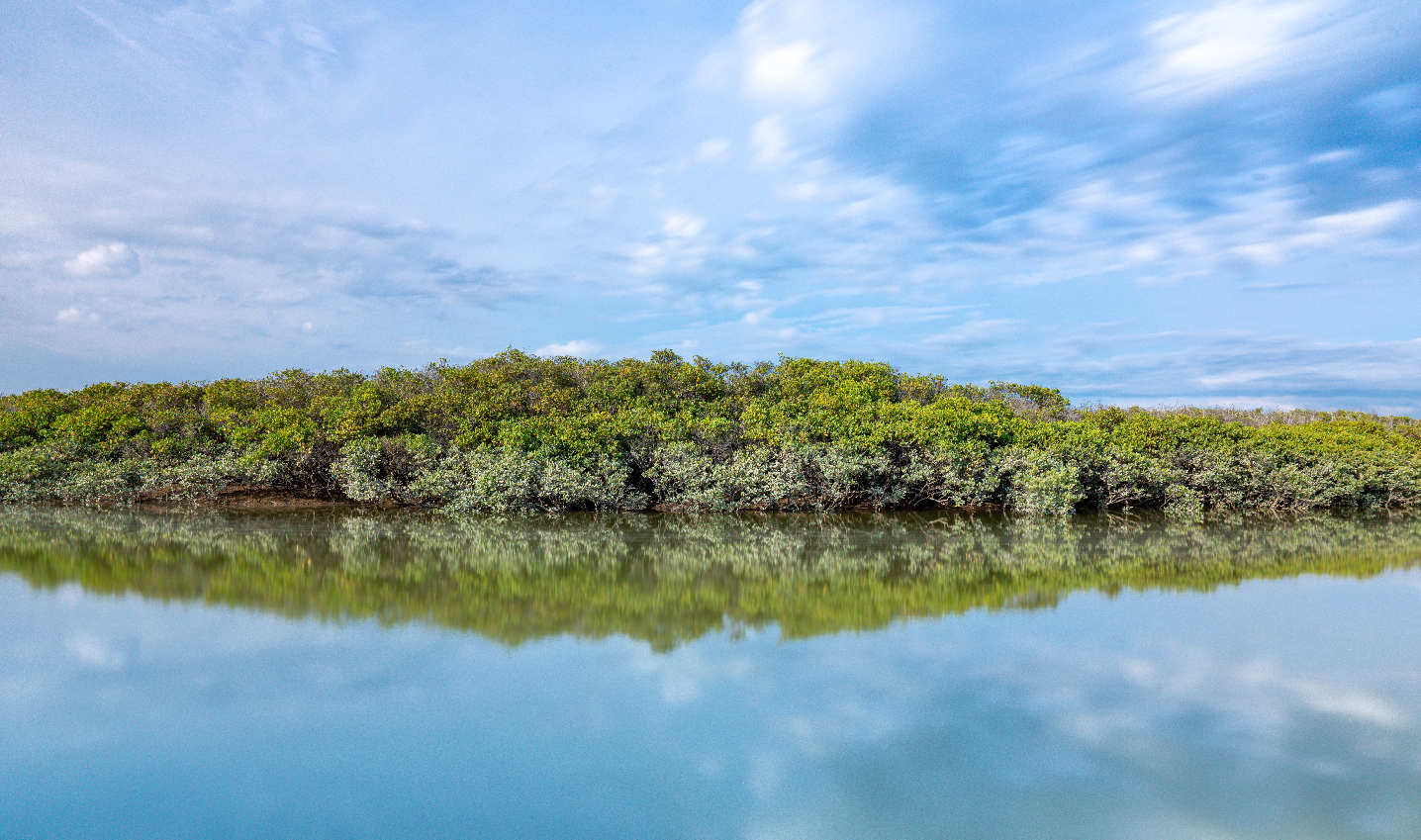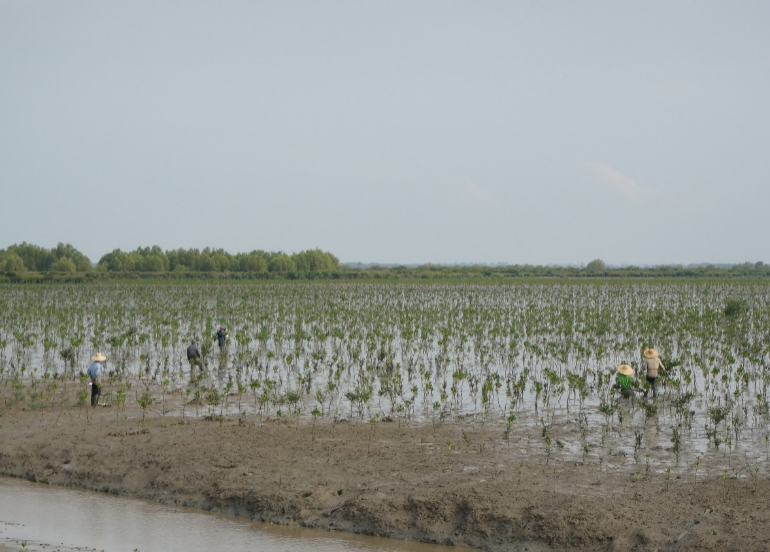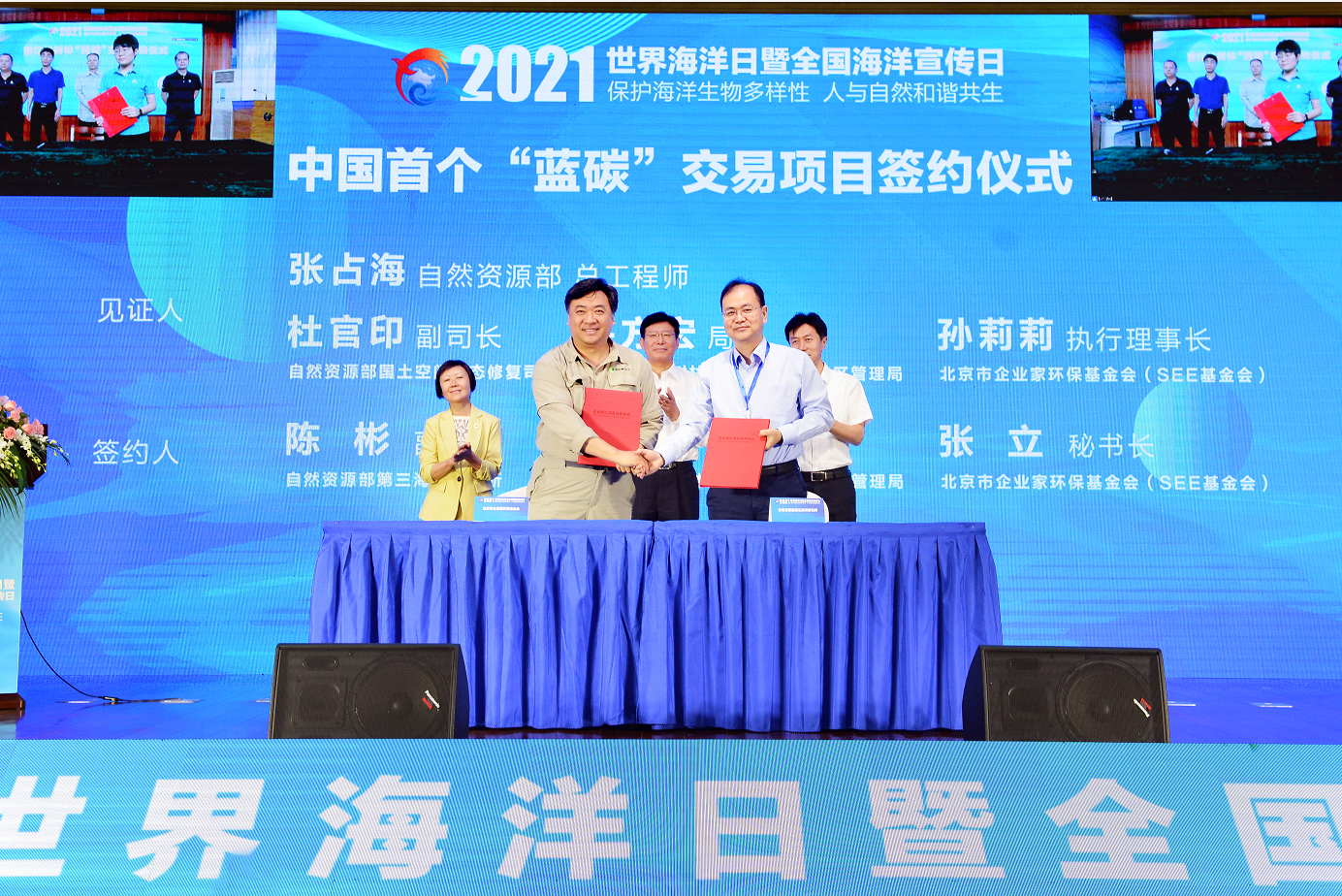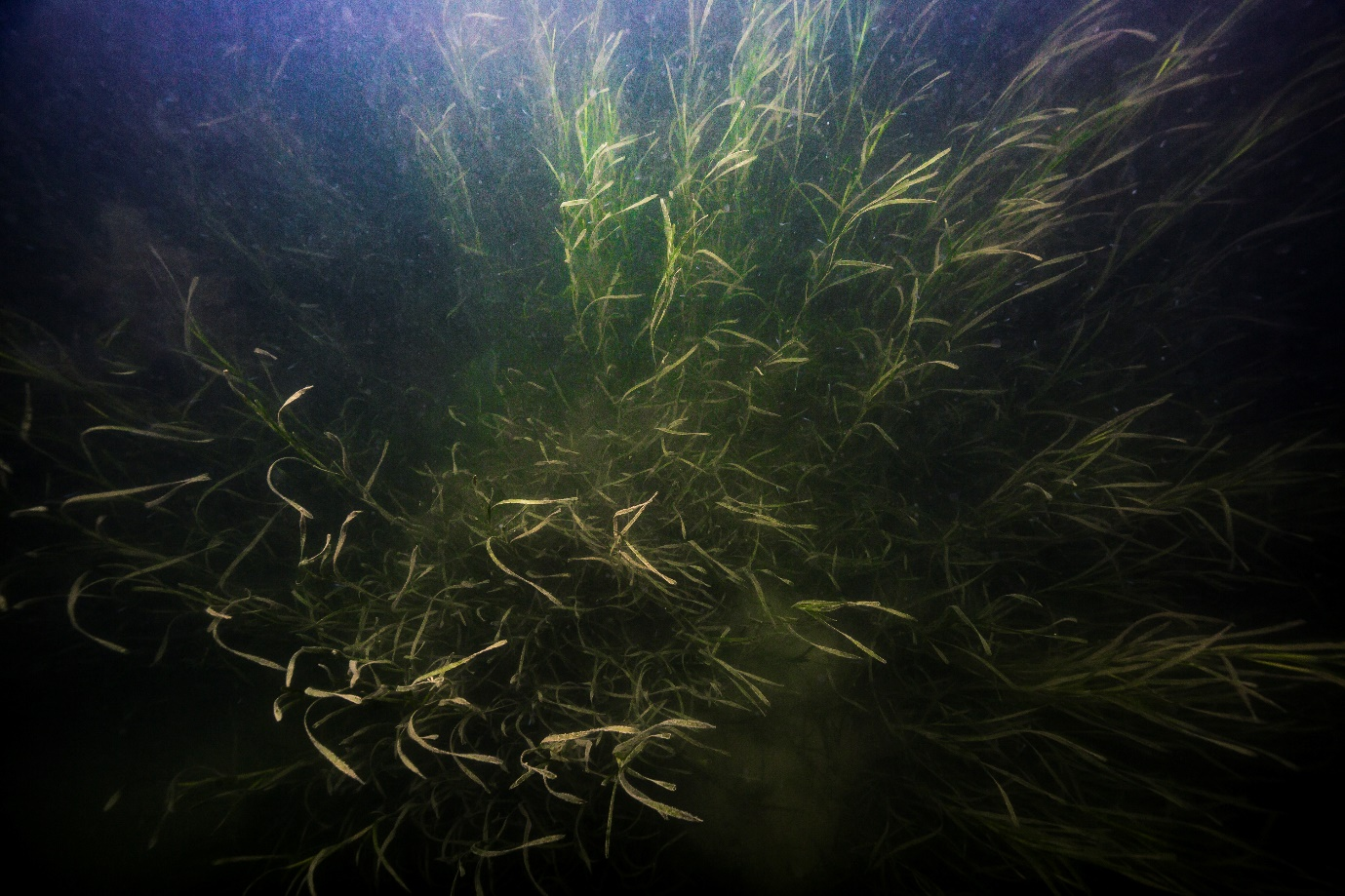 时间:2023-06-02
时间:2023-06-02
 作者:北京市企业家环保
作者:北京市企业家环保
The First Blue Carbon Trade
March 2021, Zhanjiang Mangrove Afforestation Project (Registered ID 2343) has been registered on Verified Carbon Standard (VCS) platform, the world’s largest voluntary carbon market. This is the first blue carbon project successfully developed and registered in China, as well as the world’s first blue carbon project certified with both VCS and the Climate, Community & Biodiversity Standard (CCB) with Gold Level status at the same time using CDM methodology AR-AM0014. “The successful development of this project proves that China has made huge progress on mangrove restoration and research.” said Dr. Guangcheng Chen, the leading expert of this project.
 (Zhanjiang Mangrove National Nature Reserve| Source: Wei Zhang)
(Zhanjiang Mangrove National Nature Reserve| Source: Wei Zhang)
Zhanjiang Mangrove Afforestation Project was “proposed by the Third Institute of Oceanography, Ministry of Natural Resources of China (TIO-MNR) and completed in cooperation with the Guangdong Zhanjiang Mangrove National Nature Reserve Administration (ZMNNRA). The research team used CDM methodology AR-AM0014 to assess the carbon sink of 380 hectares of mangroves restored in the protected area from 2015 to 2019, this methodology is specifically for crediting the carbon sink of mangrove reforestation or afforestation. “It is estimated that the restored mangroves will reduce 160,000 tons of carbon dioxide emissions from 2015 to 2055.” Wei Zhang, Deputy Director of ZMNNRA, said to presses.

Research team is conducting the field sampling (Provided by Dr. Chen)
China’s First Blue Carbon Trade
On June 8th, World Ocean’s Day, SEE Foundation, one of the leading China domestic environmental NGO, signed the trade agreement with project proponents purchasing the first 5880 tons of carbon dioxide emission reduction at the price of 66 RMB/ton (approximately 10.3 USD/ton), witnessed by hundreds of attendees. These carbon credits would neutralize SEE’s carbon emissions generated from the daily operation and environmental protection projects’ implementation, making SEE Foundation a carbon-neutral organization.
The first neutralized event would be the China Workshop on UN Decade of Ocean Science for Sustainable Development (2021-2030) which was held on 8th June 2021 in Qingdao China, organized by the Ministry of Natural Resources (MNR) and the National Natural Science Foundation (NSFC) of China, and hosted by the First Institute of Oceanography (FIO), MNR. Based on China Quality Certification Center's calculation, this event generated about 14 tons of CO2 emission, and SEE Foundation retired an equivalent amount of VCUs on the Verra registry which makes this conference became China's first zero carbon emission conference.
And the profit of this agreement would be used to strengthen the maintenance of the restoration sites and support local communities. “This agreement has demonstrated a new approach for NGOs to support coastal ecosystem restoration and local communities in China,” said Prof. Li Zhang, Secretary-General of SEE Foundation, “in addition, we are launching a three-year project involving 1.2 million USD to collaborating with HSBC and Mangroves Conservation Fund to strengthen mangrove restoration, and support local communities around Zhanjiang Mangroves National Nature Reserve.”

(The signing ceremony of China First Blue Carbon Trade Project| source: SEE Foundation)
After the signing ceremony, 32 organizations, including government agencies, research institutes, NGOs, and private companies, released a joint initiative - "Blue Carbon Ecosystem Protection and Restoration Initiative”. The initiative calls for actions to strengthen the protection and restoration of the blue carbon ecosystem and support coastal communities for climate change adaptation and mitigation, to create and implement policies, management, and financial incentive mechanism by using market trading of blue carbon to attract funds from government, private sectors, and the public, both domestically and internationally.
Blue Carbon
Blue carbon sink, also known as the ocean carbon sink, is the process, activity, and mechanism by which atmospheric carbon dioxide will be captured and stored in the ocean via ocean activities and marine living organisms. The world’s ocean has the largest carbon reservoir on the Earth, storing and recycling more than 93% of the total CO2 on the earth. Mangroves, salt marshes, and seagrass meadows are the typical coastal wetland ecosystems, also referred to as the blue carbon ecosystems, play important roles in climate change mitigation, adaptation, biodiversity conservation, and community benefit. Although these ecosystems only account for 0.05% of the Earth’s vegetation biomass, their annual increase in biomass is equal to the total annual increase in terrestrial vegetation. (1)(2)(3) A large number of scientific data has shown that the average carbon sequestration capacity of these three blue carbon ecosystems is 4-5 times more than the tropical rain forest ecosystem –the ecosystem with the highest carbon sequestration capacity on land.

(Sea grass meadow is also an important blue carbon ecosystem | source: SEE Foundation)
Human development has led to the loss of these key ecosystems and released a large amount of carbon. However, compared with terrestrial forest ecosystems, blue carbon ecosystems only attracted limited attention in raising sufficient funding for its conservation and restoration in the carbon trade market’s practices, which has been a common mechanism to finance restoration projects. (3)(4)
“Integrating Blue Carbon into market-based climate mechanisms could provide a new mechanism in compensating a better management for the restored mangroves and helping the restored mangroves succession into a healthy mangrove ecosystem.” Jing Wang explained, the marine program director of SEE Foundation.
The development of the Zhanjiang mangrove blue carbon project provides a successful example of ecosystem serving value realization. The carbon emission reduction through mangrove restoration could provide sustainable funds for the project itself and benefits the local communities. “And it also provides a model for realizing the value of ecological products for other blue carbon ecosystems,” Dr. Chen added. It is of great significance to encourage social funds to invest in mangrove protection and restoration, assisting the development of the blue carbon economy and serving carbon neutral.
“By 2050, China plans to restore twenty-thousand hectares of coastal wetlands. Next step, through the restoration of mangroves, seagrass meadows, salt marshes, we should be able to stop the trend of overall ecological degradation of coastal areas, improve ecosystem health significantly, and increase the blue carbon sink capacity”, said Guanyin Du, Director of Ecological Restoration Department-MNR, who gave a speech at the signing ceremony.
“Conserving and restoring blue ecosystems requires broader efforts from all sectors of the society, including NGOs, research institutes, and private sectors. Using this signing ceremony as an opportunity, I hope we all can make a contribution to climate adaptation and marine conservation, for the fate of all mankind,” Mr. Du said at the end of his speech.
(Author: Jing Zhang)
1.Nellemann, C. and Corcoran, E. eds., 2009. Blue carbon: the role of healthy oceans in binding carbon: a rapid response assessment. UNEP/Earthprint.
2.Pendleton, L., Donato, D.C., Murray, B.C., Crooks, S., Jenkins, W.A., Sifleet, S., Craft, C., Fourqurean, J.W., Kauffman, J.B., Marbà, N. and Megonigal, P., 2012. Estimating global “blue carbon” emissions from conversion and degradation of vegetated coastal ecosystems. PloS one, 7(9), p.e43542.
3.Lovelock, C.E. and Reef, R., 2020. Variable impacts of climate change on blue carbon. One Earth, 3(2), pp.195-211.
4.M von Unger, M. and Emmer, I., 2018. Carbon Market Incentives to Conserve, Restore and Enhance Soil Carbon. Silvestrum and The Nature Conservancy, Arlington, VA, USA.